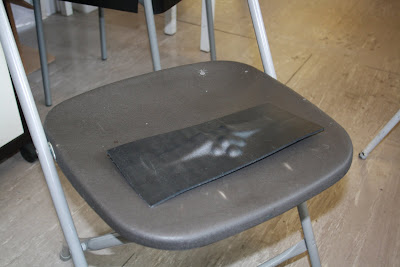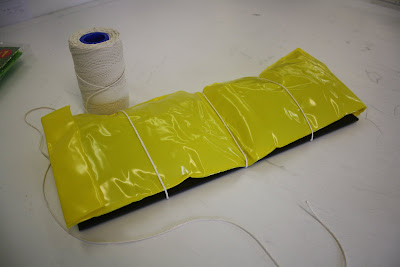
Using the previous results from the limpet designs, I decided to arrange three chairs and give them to four individuals, asking each of them to sit on each chair for 1 hour. The results were very useful.

Red Chair
User 1 “I tried to slouch and realised there was something there so sat back up straight every time”
He results for this chair were very similar with all four users. Each found that while sitting upright and correct the limpets did not hinder their comfort in anyway but as they tried to slouch they felt the presence of the limpets and forced then back up straight.

White Chair
The Results with the White chair were somewhat similar to the Red chair with the main difference being that the users could slightly feel the limpets while seating upright, but when slouched they were a deterrent to slouching. This could be due to the shape of the limpets as they are round and have a greater peak than on the red chair.

Blue Chair
The blue chair was not as effective as the other two, with the main difference being the users could slouch to an extent without feeling the limpets. This is a useful insight and observation into the positioning of the limpets.
Conclusion
With the Red chair being the ore effective in preventing the users slouching I will be using the position of the limpets when creating the next base concepts. These limpets have proven to be a very useful research tool and have given me some important insights into concept generation.





















